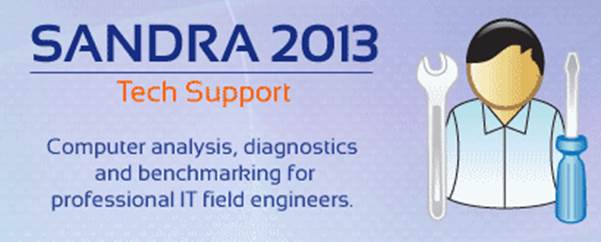You’ve built your PC. But how do you check
it’s working, and what do you do if it’s not?
Once you’ve bought a new PC you’ll probably
want to check it’s working properly, but how can you know for sure and what can
you do if it isn’t? The answer to the first question is benchmarking; running
stress tests and performance ratings on hardware will give you a numerical
value that you can compare to an older machine (or a similar system to yours,
via online resources) to tell whether your hardware is performing at optimal
capacity. If it isn’t, it’s time to answer the second question, and get down to
some serious troubleshooting.
Benchmarking and troubleshooting are both
complicated, nuanced procedures that can’t really be given a full explanation
-the easiest way to learn is by doing. However, we can point you in the right
direction and help you get started with the basics. We’ve broken each procedure
down by component, so that you can focus on the hardware most important to you.
CPU Benchmarks And Troubleshooting
The CPU is often the pride and joy of any
new PC, but it’s also one of the most inscrutable components. How can you be
sure it’s running as fast as it’s supposed to, and doing so without errors? The
answer, of course, is benchmarking, which uses processor-heavy tasks to stress
the hardware and check the accuracy of its work.

How
can you be sure it’s running as fast as it’s supposed to, and doing so without
errors? The answer, of course, is benchmarking, which uses processor-heavy
tasks to stress the hardware and check the accuracy of its work.
Tests which are designed to be
processor-centric ensure that the speed and quality of other components in your
system don’t factor in, to give you the true speed of your hardware. This can
give you values that are even more accurate than the box. If that sounds
surprising, it’s down to the way CPUs are made. Hardware is made in batches,
which are tested for performance, and their quality can vary based on the materials
and production process. For this reason, you can expect a certain level of
differentiation between the rated speeds and the actual speeds, and
benchmarking can help you find out whether your processor is dead on the speed
it should be, or somewhere above or below it.
Perhaps the best program to test your CPU
with is SiSoftware Sandra 2013 (available at www.sisoftware.co.uk), which is a
free benchmarking application with a huge number of tests that can be applied
to the CPU. They’re ‘synthetic’ benchmarks, which means that they’re designed
to test the hardware’s capabilities and maximum performance, rather than
resemble real-world usage conditions. The multi-threaded tests should give
higher scores for processors with faster clocks and more CPUs, and you can
easily compare the results for your hardware against other processors using the
built-in tools.

Perhaps
the best program to test your CPU with is SiSoftware Sandra 2013, which is a
free benchmarking application with a huge number of tests that can be applied
to the CPU.
If the results show that your processor is
underperforming, though, it’s time to start troubleshooting. To begin with,
check how much the processor is underperforming by. If it’s only slow by a few
percentage points of the expected 100% value, then you may simply be out of
luck - processors are normally rated conservatively to ensure this doesn’t
happen, but manufacturing issues and stock shortages may result in slightly
slower processors going out. You can try and swap it, but there’s no guarantee
you’ll get a better one in return.
If the problem is that the processor is
performing very badly (but remains stable) then there are a couple of potential
problems. First, check in your PC’s BIOS settings to make sure it hasn’t
accidentally been underclocked. If it has, reset the values so that it runs at
full speed, reboot, and run the benchmark again. If that was the problem, it’ll
now be running as fast as you expected. If not, it may be a genuine hardware
fault or even a case of mistaken identity - a Core i3 accidentally badged as
Core i5, for example. Get in touch with your supplier for a replacement.
Finally, if the benchmarks are causing the
computer to crash, you’ve either got a hardware fault or a cooling issue. When
CPUs are stressed, they get hot - and if they get too hot, they start to fail.
The CPU’s own fan should be enough to prevent the temperature rising to
damaging levels (that’s why overclocked CPUs need better cooling systems), but
if it isn’t you need to check why. If you’re keeping the computer in a cupboard
or the air vents are blocked, that could be the reason. It could also be that
the cooling isn’t working properly. If the former is true, simply move the case
to a more ventilated location, but if the cooling is broken, you should ensure
that it gets replaced. If someone else built it, insist they provide a new CPU
as well, in case the lack of cooling has already damaged your hardware!
RAM Benchmarks And Troubleshooting
Although CPU performance provides the most
general measure of a machine’s performance, the speed of the memory can also
become a major bottleneck, especially in high-performance gaming machines. So,
before doing anything on your system, you should immediately test your new RAM
modules for errors. RAM (especially budget RAM) is prone to manufacturing
errors which can cause all manner of problems, including unexplained crashes
and freezes. There’s often no way to diagnose these when they’re happening, so
ensuring that the RAM is working is the only way to be certain it’s not the
cause.
“Before doing anything on your system, you
should immediately test your new RAM modules for errors”
Use a free program like the excellent
Memtest86+ (available at www.memtest.org) to test your RAM as soon as you’re
able to. The software is easy to run, and you can even download a version that
auto-installs to a bootable USB stick for complete simplicity of use. If the
tests uncover any errors so soon after your purchase, you’ll be entitled to a
replacement from your supplier because they’ve sent you faulty goods. If they
refuse, you can at least contact the manufacturer under the product’s warranty
conditions. If there are no errors, you can be confident that the RAM is
working, and proceed with benchmarking.

White
jackets are cool, but not compulsary for benchmarking
Memory benchmarks use synthetic tests to
determine the bandwidth and latency of your RAM modules and banks. The best
performance is given by RAM modules with a high frequency, although the number
of channels and capacity of modules also plays a part.
If you’re willing to pay for benchmarking
softwa re, AIDA64 Extreme Edition can test read, write and copy bandwidth, and
latency timings. Again, though, SiSoftware’s Sandra 2013 is capable of running
tests that give you statistics in real-world terms - Bandwidth in gigabytes per
second, latency in nanoseconds. Higher is good for the first, lower is good for
the second, and faster clock speeds on your RAM should improve the former while
lowering the latter. Again, if you run into problems, you need to do some
troubleshooting.
If the amount of RAM appears to be wrong,
you need to check two things: first, that you’re running a 64-bit operating
system (remember, 32-bit systems can’t recognise more than 4GB) and secondly,
that the RAM is actually present and seated correctly in its slots.
If you’re getting crashes during tests, it
may again be the result of excessive heat inside the case (although RAM doesn’t
typically require active cooling, so it would have to be quite excessive) or
the result of accidentally overclocked RAM. Check the speed rating (given in
MHz) and make sure your BIOS doesn’t list a higher value for the RAM modules.
If the RAM is operating slower than you’d expect, as with CPUs it may be
underclocked, or simply performing within an acceptable margin of error.
You can use benchmarks to determine the
best configuration for your RAM modules, too. Generally, you get the fastest
speeds by placing the best/biggest modules in the first bank, but feel free to
swap them around and benchmark other configurations to see what works best.
Just remember not to accidentally zap them while you’re moving them around
between reboots!